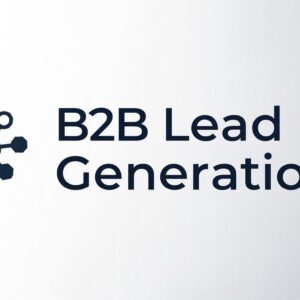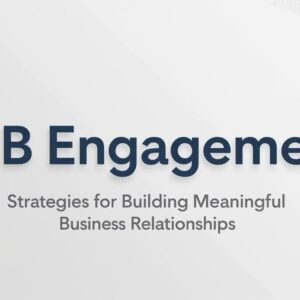The rise of AI agents is transforming how businesses operate. No longer limited to rule-based automation, these intelligent systems can understand context, make decisions, and coordinate actions across multiple systems — reducing manual effort and boosting productivity.
Whether you’re managing invoices, handling customer support, or running marketing campaigns, automating workflows with AI agents helps you move faster and smarter. In this guide, we’ll walk through seven practical steps to help you automate your business workflows — from identifying the right task to scaling automation across your organization.
What Are AI Agents and Why They Matter
An AI agent is an autonomous digital entity capable of perceiving its environment, reasoning through data, and taking action to achieve defined goals. Unlike traditional automation scripts that follow fixed rules, AI agents are adaptive — they can learn, communicate, and even collaborate with other agents or humans.
Businesses investing in AI agent software development are unlocking a new level of agility. These intelligent systems can manage repetitive workflows, process large data volumes, and make contextual decisions that once required human oversight. From finance to logistics, AI agents are now an essential part of digital transformation strategies.
Step 1: Choose the Task
Start by identifying the most repetitive, time-consuming, and error-prone tasks in your daily operations. List the top ten tasks you perform most often, then highlight those that are manual, repetitive, or prone to human error.
AI agents are ideal for tasks that go beyond static logic or simple automation — those requiring contextual understanding, decision-making, or coordination across multiple systems.
Example: Invoice reconciliation involves comparing three documents — the purchase order, goods receipt note, and vendor invoice — before approving payment. If all match, the invoice is cleared; if not, it’s flagged for review.
Selecting one end-to-end process like this ensures your first AI automation project delivers a clear, measurable outcome.
Step 2: Define Success
Every successful automation project starts with a clearly defined goal. Ask yourself:
- What problem am I trying to solve?
- How will I measure success?
- What’s the expected outcome in terms of time, cost, or accuracy?
Set measurable objectives — whether it’s reducing errors, saving time, or cutting costs. Defining these success metrics helps evaluate impact and refine your approach later.
Example: If automating invoice matching saves your finance team hours of manual review, they can focus on higher-value work such as financial planning or vendor relationship management.
Since AI agents are goal-oriented software systems, setting the right success criteria ensures that their objectives align with your business priorities.
Step 3: Map the Agent’s Workflow
With your task and goal defined, visualize how the process works from start to finish. Break it into step-by-step instructions, identifying where decisions are made, what events trigger actions, and which systems the agent needs to access.
If no formal workflow exists, create one by documenting team discussions or recording how the task is performed manually. This exercise ensures clarity and exposes hidden inefficiencies that automation can improve.
Example: For invoice reconciliation, the workflow could include retrieving purchase orders, comparing items line by line, locating delivery records from warehouse systems, logging discrepancies, routing approvals, updating ERP entries, and maintaining an audit trail.
Mapping this process gives your AI agent a blueprint to follow — and provides insight into which integrations and tools are required.
Step 4: Identify the Governance and Tools Needed
AI agents rely on tools — connections that allow them to act, access data, and perform tasks. These tools can include APIs, prompts, data connectors, and integrations with existing enterprise systems.
Common tool categories include:
- API tools: To interact with business applications like ERP or CRM platforms.
- Prompt tools: To interpret complex instructions or contextual data.
- Data tools: To retrieve and analyze information from internal or external databases.
- Integration tools: To move information seamlessly between systems.
Alongside tools, robust governance is essential. This means defining what an agent can access, monitoring its actions, and ensuring compliance with data security policies. Features such as centralized control, anomaly detection, and audit logs are critical to prevent misuse and maintain transparency.
Example: An invoice reconciliation agent might use an API tool to connect to ERP systems, a data tool to check vendor information, and an integration tool to move data between warehouse and finance platforms.
Identifying the right governance and tools early ensures your agent can function effectively and securely within your existing digital ecosystem.
Step 5: Design the Agent, Apply Guardrails, and Test for Validation
Once you’ve identified your tools and governance framework, it’s time to design your AI agent. Define the logic it should follow, specify what data it can access, and determine how it should respond in different scenarios.
From the very beginning, apply guardrails to ensure responsible and controlled operation. Guardrails can include data access restrictions, transaction limits, escalation rules, and privacy filters. These prevent errors and protect sensitive information.
Always begin testing in a controlled, non-production environment. Observe where the agent performs well, where it struggles, and when human oversight is still needed.
Example: For an invoice reconciliation agent, set guardrails such as restricting automatic approvals above a certain dollar amount, requiring human review for exceptions, and logging every decision for audit purposes.
Step 6: Deploy and Govern
Once validated, deploy your AI agent into real business operations. Whether integrated directly into workflows or accessed via a chat interface, this is where automation starts delivering tangible value.
Monitor the agent closely during the initial rollout. Track performance metrics, review logs for anomalies, and make adjustments as necessary. Continuous monitoring helps ensure security, reliability, and compliance.
Example: Once live, your invoice reconciliation agent can automatically compare purchase orders and invoices, verify quantities and prices, flag discrepancies, and process approvals — freeing your team from manual reviews.
Governance should remain ongoing. Regularly review performance data, update access controls, and retrain models as processes evolve.
Step 7: Assess and Iterate
After deployment, return to the success metrics defined earlier. Compare the before-and-after results to quantify the benefits — such as time saved, error reduction, or cost efficiency.
Even small improvements can lead to significant long-term value when applied across multiple workflows. Analyze performance data, gather user feedback, and refine the agent’s logic for better results.
Once you’ve demonstrated success with one use case, expand. Automate additional processes across departments, enabling agents to collaborate for broader business impact.
Example: After automating invoice reconciliation, explore automating purchase order creation, payment scheduling, or supplier onboarding. Each iteration compounds value and drives your organization toward full-scale intelligent automation.
Remember: automation only scales sustainably when built on trust. Establishing governance and transparency from the start ensures your AI agents can grow with confidence and accountability.
Real-World Impact: What Businesses Are Achieving with AI Agents
Businesses across industries are already reaping major benefits:
- E-commerce brands use AI agents to personalize recommendations and manage orders.
- Finance companies employ AI for fraud detection and regulatory compliance.
- Healthcare providers streamline patient data management and scheduling.
- Marketing agencies automate campaign optimization and performance reporting.
These success stories underline one truth — AI agents are not just tools; they are strategic assets driving digital transformation.
Final Thoughts
Automating business workflows with AI agents is no longer a luxury — it’s a game-changer for productivity and competitiveness.
By following these seven steps — from identifying processes and setting goals to training, testing, and scaling — you can unlock a new level of operational excellence.
Investing in AI agent software development is an investment in the future of your business. The sooner you begin, the sooner you’ll free your teams from routine tasks, improve accuracy, and accelerate growth.




